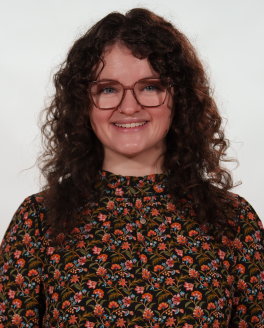
Anneliese Ward
is one of our graduate students from the 2020 cohort, who is currently working toward her PhD. Here, we profile Anneliese's current research and inspiration.
Could you please describe your research and why it matters? What stuck out to about this or why did you choose to dig into this topic?
My research looks at the way people differentiate between violent and nonviolent crimes and how they use that distinction to determine appropriate punishments. I draw on the case of COVID-related efforts to reduce incarceration as a unique opportunity to examine these questions. This is an important topic because there are drastically different cultural attitudes toward people charged with violent versus nonviolent crimes, and this can make it difficult to pass criminal-legal reforms that extend beyond low-level offenses. So, the distinction between violent and nonviolent crime has been hugely influential in efforts to reduce incarceration, including during the COVID pandemic.
I chose to dig into this topic because, even though we know that the distinction between violent and nonviolent is culturally salient, we don’t know very much about the way people actually distinguish between the two. Because so much public and political discourse centers on "violent crime”, I think it is important to know exactly what people mean when they refer to violent crime and how this shapes their opinions about criminal-legal policies.
Is there anything you learned in your research or during your research that surprised you? Is there anything that pushed you in a new direction or has inspired ideas for the future?
Early in graduate school, I was interested in the criteria used to determine eligibility for expedited release during COVID. When I first started examining that question, I expected that the criteria would require that released individuals be charged with nonviolent crimes only, which ended up being the case. I was really surprised, though, by how varied examples of “nonviolent” crimes were. A recurring example was DUIs, which were often cited as both eligible and ineligible offenses, depending on the county. This pushed me to think more broadly about the way people think about violence versus nonviolence and how that distinction shapes criminal-legal outcomes.
